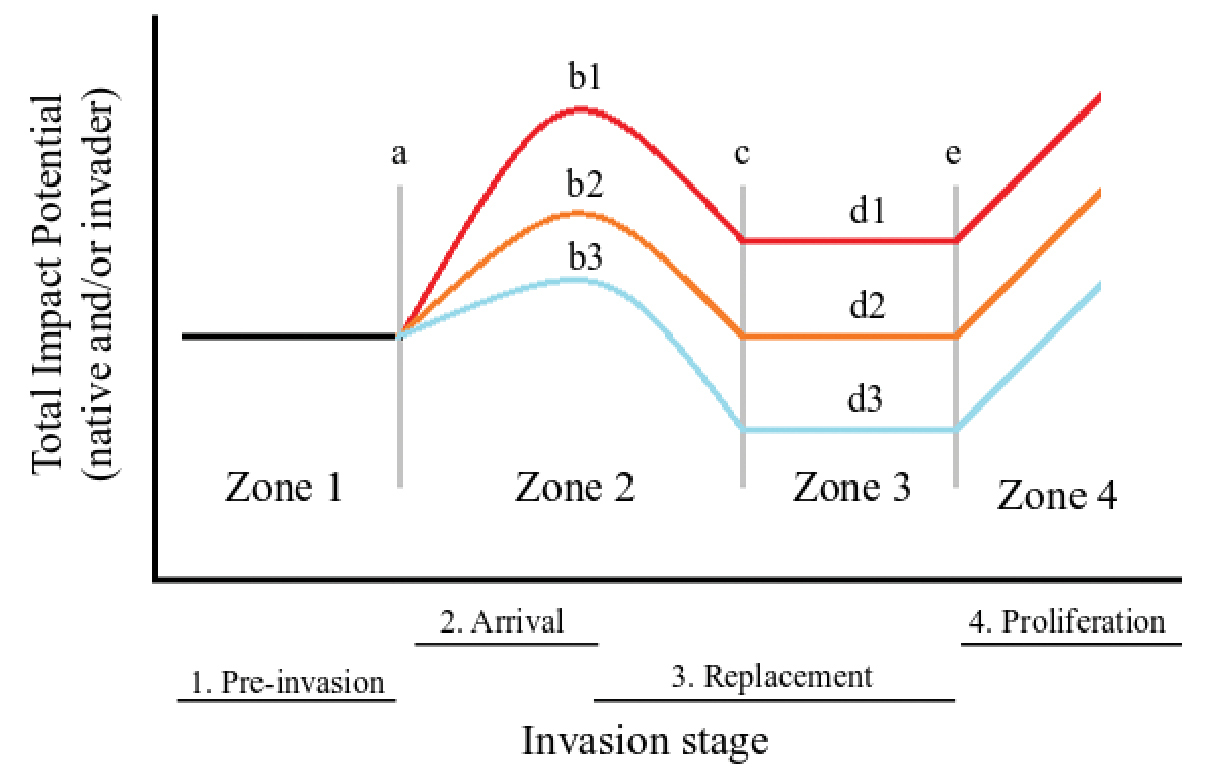
|
||
|
Conceptual spatio-temporal patterns of invasion impact across four invasion stages. In Zone 1, the “Pre-invasion” baseline impact is driven by the native species before the invader arrives, and at point “a” the invasion takes place. In Zone 2, additional impact is exerted by the “Arrival” of the invader, that is, impact is driven by invader and native combined, up to a temporary impact peak, which might vary in magnitude, denoted “b1–b3” in Zone 2. Following these peaks, impact declines as the invader replaces the native, with the point of complete “Replacement” denoted “c”. In Zone 3, with only the invader now present, the impact level may remain higher than the native species baseline. Further, in Zone 4, after point “e”, “Proliferation” of the invader may occur with consequent heightened impact. This scheme does not assume all stages will occur (e.g. partial replacement may persist) but outlines all likely scenarios. |